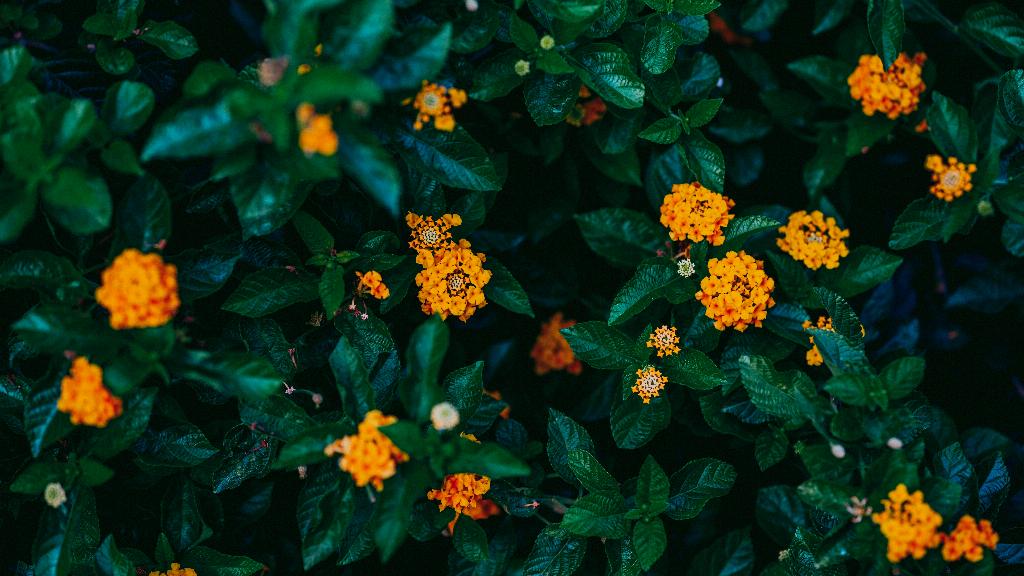Water is crucial for the optimal growth and development of lantana plants. When it comes to watering lantana, especially newly planted ones, a consistent watering schedule is essential. Newly planted lantana should be watered regularly to help establish healthy root systems. This initial watering phase is vital for the plant to thrive in its new environment.
As lantana plants mature and become established, they exhibit a certain level of drought tolerance. Despite this tolerance, to ensure the best display of vibrant blooms and lush foliage, it is recommended to provide approximately one inch of water per week to your lantana plants. This can be achieved through a combination of natural rainfall and supplementary irrigation as needed.
Regular watering plays a significant role in the growth and flowering performance of lantana plants. Consistent moisture levels in the soil promote steady growth and encourage the production of abundant, full-size flowers. By providing adequate water to your lantana, you can ensure that your plants flourish and bloom profusely throughout the growing season.
When determining the frequency of watering for lantana, it is important to consider factors such as soil type, weather conditions, and the plant’s stage of growth. Generally, it is advisable to monitor the moisture levels in the soil and adjust your watering schedule accordingly. During hot and dry periods, lantana plants may require more frequent watering to prevent dehydration and maintain their vitality.
While lantana plants can withstand dry conditions to some extent, prolonged drought stress can negatively impact their overall health and vigor. To prevent water stress and ensure the continued well-being of your lantana plants, pay attention to signs of wilting or leaf curling, which indicate a need for immediate watering. Taking proactive measures to maintain proper soil moisture levels will help your lantana thrive and bloom abundantly.
It is essential to water your lantana plants deeply but infrequently to encourage the development of deep root systems. Shallow, frequent watering can lead to shallow root growth, making the plants more susceptible to drought and other stressors. By watering lantana deeply and allowing the soil to dry out between watering sessions, you promote root growth that enhances the plant’s resilience and longevity.
Another key aspect of watering lantana plants is the timing of irrigation. Watering lantana in the morning allows the foliage to dry out during the day, reducing the risk of fungal diseases that thrive in damp conditions. Avoid watering lantana in the evening, as this can create a prolonged period of high humidity around the plant, making it more susceptible to fungal infections.
When watering lantana, it is important to aim for even moisture distribution throughout the root zone. Water the plants at the base to ensure that the water reaches the root system effectively. Avoid overhead watering, as it can lead to water wastage and increase the likelihood of foliar diseases. Directing the water at the base of the plant promotes efficient water uptake and minimizes water loss.
While lantana plants appreciate regular watering, it is equally important to avoid overwatering, as this can lead to waterlogged soil and root rot. Allow the soil to dry out slightly between waterings to prevent water accumulation around the roots. Monitoring the soil moisture levels and adjusting your watering frequency accordingly will help prevent water-related issues and maintain the health of your lantana plants.
During periods of heavy rainfall, adjust your watering schedule to account for the additional moisture the plants receive from natural precipitation. Overwatering lantana during rainy periods can lead to waterlogging and suffocation of the roots. By monitoring the weather conditions and adapting your watering routine accordingly, you can prevent water-related problems and promote the overall well-being of your lantana plants.
In conclusion, watering lantana plants on a consistent basis is essential for their growth, flowering, and overall health. By providing adequate moisture, monitoring soil moisture levels, and adjusting your watering schedule based on environmental factors, you can ensure that your lantana plants thrive and display a spectacular show of colorful blooms. Remember to water deeply but infrequently, water at the base of the plant, and avoid overwatering to maintain optimal growing conditions for your lantana plants.

